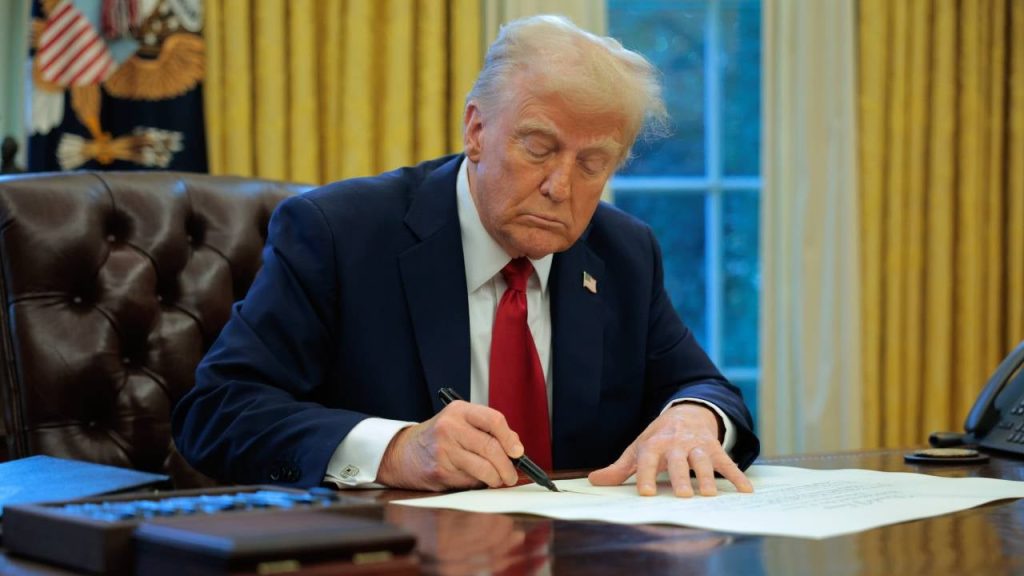Baby boomers and others nearing retirement should pay careful attention to their investments, especially now that newly elected President Donald Trump is shaking up the economy. Regardless of whether you like Trump’s economic policies, you need to be carefully preparing for retirement.
“The actions of this new administration calls on boomers, Gen X, and all of us to assess not only our retirement strategies, but our entire investment portfolios,” says Kristin Hull, founder and CIO, Nia Impact Capital.
Here are three changes that boomers — and Gen X, too — should consider for their portfolios.
Need an advisor to help you get your retirement on track?
Bankrate’s AdvisorMatch can connect you to a CFP professional to help you achieve your financial goals.
3 changes to make to your retirement portfolio during Trump 2.0
1. Watch your bond exposure
Trump has proposed a number of actions that could jolt inflation higher, and retirees who have longer-term bonds may want to pay particular attention.
“We think that inflation is going to remain ‘sticky’ and the stickiness might be exacerbated by some of the policies now being put forward by the current administration,” says Maggie Kulyk, CEO and founder of Chicory Wealth in Decatur, Georgia.
In particular, Kulyk points to tariffs and mass deportations, both of which could raise inflation generally. They could also impact inflation in certain areas of the economy such as food or hospitality, depending on exactly how they’re implemented.
If inflation moves higher, the Federal Reserve may need to shift its stance on interest rates. While many analysts expect the Fed to lower interest rates this year, if inflation moves higher, the central bank may have to raise them instead. That shift could throw bond prices for a loop.
“As a consequence, you would want to pay attention to the duration of your bond holdings in your portfolio,” says Kulyk. “The longer the duration, the more sensitive to interest rates, and at this point, we are assuming no interest rate reductions in 2025 by the Fed.”
Long-term bonds will be hit the hardest if inflation keeps rising. In contrast, a shift to more short-term bond exposure, such as one of the best money market funds, could offer some inflation protection if the Fed raises rates, pushing up the payout on short-term U.S. Treasurys.
2. Stick with high-quality companies
High-quality companies have powered the stock market for decades, regardless of who’s been in the White House. Those planning for retirement, especially those with a long time before they need the cash, can invest in these “blue chip” stocks and continue to grow their wealth over time.
“We are advising our own clients to buy high-quality companies with high-quality earnings,” says Hull.
For those who don’t have the time or desire to invest in individual stocks, an easy way to use this strategy is to buy a diversified index fund, such as one based on the S&P 500 index, which tracks the stocks of hundreds of America’s top companies. The index has returned about 10 percent on average annually. You can invest in these funds by buying one of the best S&P 500 funds. A financial advisor can also help you select appropriate investments for your individual financial needs.
But it’s important to understand that any kind of stock-based fund can fluctuate over time, especially if the valuation of stocks is relatively high, as they seem to be now. Stocks just had two banner years in a row, returning more than 20 percent in both 2023 and 2024. That’s raised a key valuation measure used by investors called the price-to-earnings, or P/E, ratio.
“We are starting to see higher P/E ratios now,” says Joel Russo, owner and retirement advisor at NJ Retirement Planning in Sea Girt, New Jersey. “If you look back at history, during or right before several bigger market downturns, P/E ratios became extremely high.”
So, if you have just a few years until retirement, a huge “about face” in your retirement portfolio might not be the right move. Those with more time until they retire can ride out the market’s volatility, however. To mitigate the risk of investing at the top, it’s useful to use a strategy called dollar-cost averaging, buying regularly at many points in time.
3. Increase your allocation to dividend stocks
Dividend stocks can be an attractive place for retirees or those nearing retirement.
“With boomers living longer and also needing current income, forward-looking portfolios that include dividend-paying companies will offer some ballast from the volatility ahead,” says Hull.
A portfolio of dividend stocks can do three things that retirees like: generate income that they need to live on, grow their wealth and reduce the volatility in their portfolio. That combination can make dividend stocks or dividend stock funds a particularly good pick for retirement investors. A dividend stock fund may also not be as richly valued as high-growth funds, making it safer.
“What all this might mean for the individuals 10 years out from retirement or in retirement is switching or adding in high dividend stock strategies for continued growth with a bit less risk and moving towards income investments,” says Russo.
Now, like other types of stocks, dividend stocks can also fall if the market as a whole declines. But they may be more resilient and still pump out their dividend income, helping out retirees. And that can be good in any climate, regardless of who is president.
What about the Social Security shortfall?
Experts estimate that Social Security will not be able to pay full benefits to retirees as soon as 2033, unless significant changes are made. That date is creeping ever nearer, making any potential fixes even more costly. Congress doesn’t seem to be making it a priority to shore up the program, which serves some 70 million Americans. And Trump is on record saying that benefits should be cut but also that the program should be saved.
Even that short timeline could be sped up if some of Trump’s plans come to fruition.
“If, in fact, we continue to have a labor shortage that might be exacerbated by deportation, and overall tighter immigration, the shortfall could get worse as Social Security is dependent on current workers funding the Social Security coffers for those who’ve already retired,” says Kulyk.
That’s why it’s absolutely vital that retirement savers plan to, at a minimum, make up any income shortfall with their own personal savings. The surer way is to save and invest more now rather than hoping for higher investment returns as a means to bail out only modest savings discipline. Take full benefit of tax-advantaged retirement accounts, such as 401(k) plans and IRAs.
“So younger folks, particularly those who are high earners, should be doing all they can to continue to save for retirement and reduce their reliance on Social Security,” she says.
And don’t let the name on the Oval Office influence your decision too much one way or the other.
“Regardless of who is president, boomers and Gen X should ensure they’re setting funds aside for retirement right now,” says Cynthia Campos Delgado, founder and financial advisor at Campos Wealth Management in McAllen, Texas.
A good financial advisor can also help you make smart decisions and maximize your retirement income.
Bottom line
“I don’t think retirement strategies should be changed just because of a new president, Trump included,” says Russo.
While it can be important to pay attention to major shifts that might occur under a new U.S. president, the stock market has done well over time, under both Republican and Democratic leaders. So try to avoid knee-jerk reactions in your retirement portfolio. If you have a long-term strategy that’s worked, stick with it. Don’t simply sell it all because you’re worried about Trump’s economy or buy too much because you think it’s going to boom.
Read the full article here

